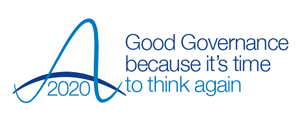Buddying
10 July 2020

One of the most consistent and refreshing messages we have heard from our NHS and other public sector colleagues during the COVID-19 pandemic is that local partnership working has been invigorated, becoming more meaningful and impactful.
As we emerge from the lockdown period and NHS organisations begin to switch services back on, and as the unifying threat of COVID-19 begins to dissipate, it will be important – but also challenging – to ensure that this momentum is not lost.
The experiences of the NHS in embedding the learning from previous partnership models, including improvement approaches such as buddying, may be instructive. So we’ve decided to share the findings of a study we recently completed in partnership with East Lancashire Hospitals NHS Trust.
Organisational buddying
Our study, which focused on organisational buddying, identified several key thematic areas which boards of NHS organisations should consider before entering into partnership arrangements. These built upon the work of the Dalton Review, as well as the Care Quality Commission and NHS Improvement more broadly.
Although a lot of the findings smack of common sense, we have found that they have all too often been overlooked within NHS buddying and partnership arrangements.
- Culture and behaviours – NHS organisations can often have strikingly different cultures and approaches. We know, for example, that stressed organisations often experience significant churn and can adopt a defensive or ‘bunker’ mentality, which can hinder collaboration. If boards, and indeed systems, are not mindful of this then meaningful partnership working can be challenging.
- Capacity and resource – It is easy to underestimate the time and resource commitment required to make a success of partnership arrangements. Those organisations that fail to appreciate this risk not only losing the benefits from the collaboration but also of sustaining significant reputational damage. This issue of capacity assessment and mapping should be an open, transparent and continuous process that is explored at the on-boarding and planning stages and in joint governance arrangements.
- Evaluation and learning – Evaluation has a significant developmental role for organisations providing healthcare, helping to ensure that programmes of work are as effective as they can be and supporting continuous quality improvement. Periodic evaluation should be built into any partnership arrangements as this will afford team members an opportunity to reflect on progress and if necessary rectify issues, to learn from those working in other healthcare environments, and to foster an increased culture of collaboration and teamwork.
- Communication and visibility – The importance of clear communication and visible leadership cannot be underestimated in any successful partnership. Many staff have experienced numerous NHS reconfigurations and may be cynical about any new initiatives. It is therefore important that staff recognise any partnership arrangements as being beneficial rather than burdensome, as something that is in the patients best interest and not as something that is ‘being done to them.’ Ensuring that leadership teams are approachable, supportive, and responsive will also be vital.
- Regulation – Regulators can have a significant bearing on the effectiveness of any partnership. If partnership working is to be effective in the future, there is a need for a more permissive regulatory system which moves away from a focus on target driven activity. This has been a mark of the experience of NHS organisations during COVID-19.
The future is connected
The future of health and social care is clearly one of system and increasingly connected services. In such an environment boards will need to be cognisant of the potential benefits and challenges to be derived from bringing together a range of organisations with often strikingly different cultures and backgrounds.
To support this, and informed by our study, we have developed a series of questions against each of the themes above for board members to consider when developing partnership arrangements.
Culture and behaviours
What is the appetite of our board for the partnership arrangement?
- How will we engage across organisations to build trust and alignment across both senior teams?
- How can we best resource the improvement work?
- Have we clarified timelines and resource allocation for improvement internally and externally?
- Are leadership teams and relevant staff clear on their roles in driving improvement?
- Have we assessed the risks (such as diverting capacity away from our sites) to our organisation as a result of the partnership arrangement?
- Have we considered what the governance arrangements look like?
- Have we considered how we can use partnership working to both drive improvement and bolster performance?
- Are we developing processes in tandem that work for the leadership and staff of both organisations?
Evaluation
- Have we considered how programmes of work will be evaluated at the planning stage?
- How will we communicate the conclusions of any evaluation in order to share learning more widely within the health and social care sector?
Communication
- Have we developed a communications strategy for the partnership arrangement?
- Does this include staff and the public?
- Are approaches to communication aligned across all organisations?
- How can we ensure that the leadership of all organisations are visible and available to staff as necessary?
Regulation
- What support / resource will we need from other organisations e.g. regulators to ensure the arrangement is successful?
- Do external bodies understand our approach to improvement, and recognise that significant improvement will not be realised overnight?
If this bulletin prompts any questions or comments, please call us on 07732 681120 or email advice@good-governance.org.uk
Chris Smith
Consultant
